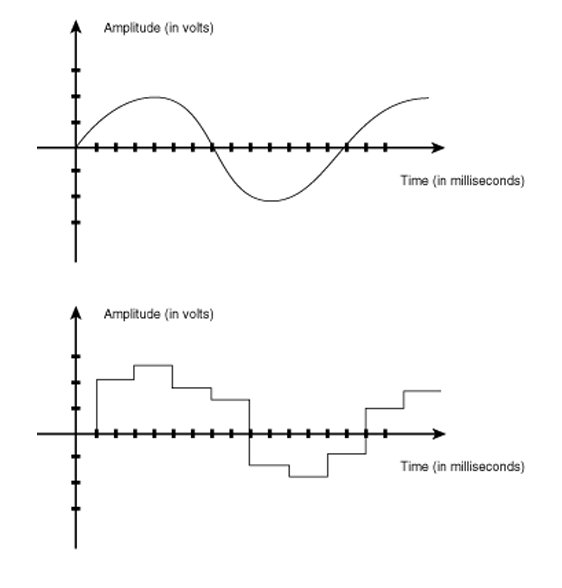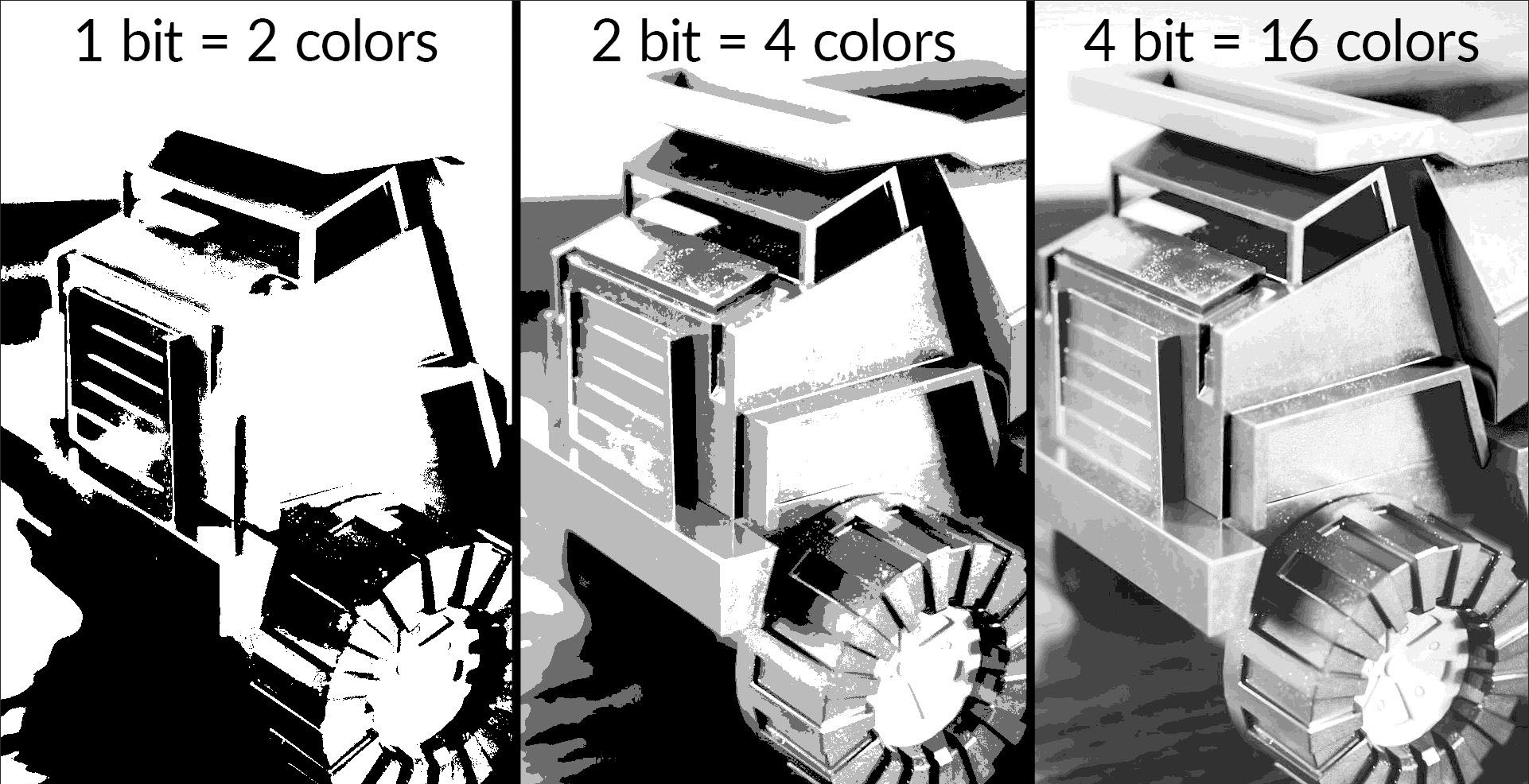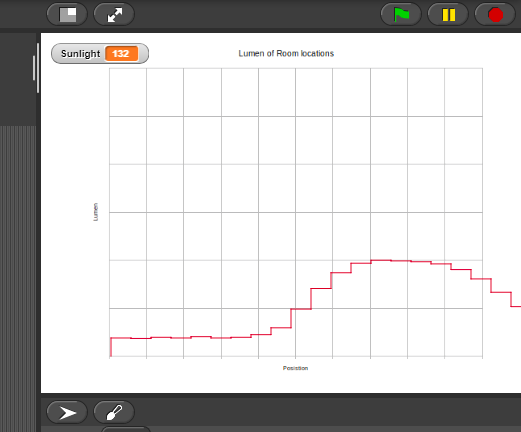5.2 Analog Input
We live in an analog world. There are an infinite amount of colors to paint an object (even if the difference is indiscernible to our eye), there are an infinite number of tones we can hear, and there are an infinite number of smells we can smell. These are all types of information that are measured in analog signals.
Digital signals and objects deal in the realm of the discrete or finite, meaning there is a limited set of values they can be. This means we have to take the infinite complex readings from the real world and convert it into a binary signal the computer can understand. Think about it like the sound quality of listening to someone playing guitar in real life, or listening to an MP3 of the same guitar player. We loose some information when we digitize the music.

Natural analog wave vs. digitized waveform after analog to digital conversion
To enable a computer to understand information coming from the analog signals of the real world first you need a sensor that can read from the real world then the computer needs a special piece of electronics called a digital to analog converter. Depending on the quality of sensor you can pick up a cleaner signal and depending on the converter it can read from the sensor with more precision.

Different quality Bit Depth, more bits closer to the real analog signal
Low bit depth (8Kbp/s) VS. Higher bit depth (210Kbp/s) signals in music (switches at 15 seconds).
A very high quality conversion from analog to digital can create a great digital photo VS. a less powerful conversion makes a very pixelated picture with less color range. A great sounding musical recording VS. a low quality one will have less precision in the waveform. In the case of the Robot In A Can the digital to analog converter converts analog signals into 1024 different possible values (10 bits).
Basically, think about it like this, instead of the infinite smooth curve of signals coming from the real world, the Evebrain divides this up into 1024 pieces, whole numbers from 0 - 1023, because of this you can see steps in the graph it produces.

Graph from the Analog to Digital Converter on the Evebrain and the light sensor in Snap!